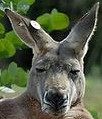The second wing has to be put straight now.
I will start like last time by gluing the wingtips and fixing it to my trusty slither of wood, leaving to dry and then adjusting and gluing as I go.
Just a reminder.


Wingtips first.

But this time a little more clamping needed to be done.
I had high spots and low spots on this wing, so I had to raise the low spots.
So when the wingtip was dry I cut out some plastic card to lift the low area. The wing was forced open and a square of 2mm plastic card was pushed into place with the tip of a modelling knife and the edges pressed together. This seemed to lift the low area so I pushed in the needle applicator of the glue and fixed it in place.
Clamps were added to the wing edges once glue was applied.

After an hour or so the clamps came off, it looked passable.


Looking at the wing root I could see that same process would be used to lift low areas and push down on high areas on to plastic under neath
More oblongs of plastic would be needed, they were eyeballed and cut and pushed into place.
The result is okay but not fantastic. Glue was applied and she was clamped down.

I did not take pictures when cutting and gluing as I was too involved in trying to make a reasonable job of it.
You can see the plastic shapes as I hold the wing up to the light.



If I come across this again I will cut the plastic to fit the inside of the wing and build up and sand down first.
The horizontal stabilisers had to be clamped to the magic wood, glued and clamped.
I can see why the kit only cost £8:25 in the sale.




And on the other end.

After drying time the second wing and stabilisers were test fitted, sanded and refitted.
Once happy I fixed them in to place.
Not brilliant but part of the learning curve.


I will see what I can do to tweek the wings, or it will be some highlights and lowlights to give an illusion of a straight flat wing.





NB. One of the undercarriage legs is broken so I have sent for some metal ones to replace and give strength to hold the weight.
Thanks for dropping by.
















































































































